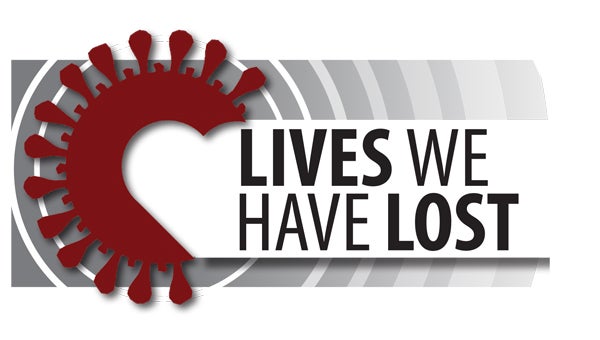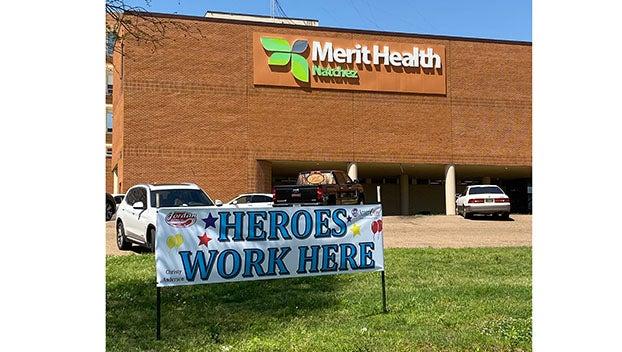COVID rates slow; senior boosters available
Published 7:18 pm Friday, October 1, 2021
|
Getting your Trinity Audio player ready...
|
JACKSON (AP) — Mississippi health officials say booster shots for the Pfizer COVID-19 vaccine are now available at all county health department clinics, and people over the age of 65 are a priority for the extra jab.
As of Friday morning, Adams County had reported a total of 4,462 COVID-19 cases and 118 deaths. More than 489,216 cases have been reported statewide, with 9,646 deaths.
Eligibility for boosters is currently limited to people in that age group as well long-term care facility residents and adults 18 and over with certain underlying medical conditions or who are in occupations that increase their risk of exposure to the virus.
Third shots of Pfizer and Moderna for people with weakened immune systems are also available at county health departments, according to the state department of health.
Vaccination significantly reduces the possibility of hospitalization or death from COVID-19. But seniors constitute the vast majority of the small number of fully vaccinated Mississippi residents who have contracted COVID and died, according to State Epidemiologist Paul Byers. So Byers said people over 65 need to be prioritized for boosters.
The news of the booster availability comes the same day that officials reported a nationwide decline in COVID-19 cases across the United States over the past several weeks. The decline has given overwhelmed hospitals some relief, but administrators are bracing for yet another possible surge as cold weather drives people indoors.
Health experts say the fourth wave of the pandemic has peaked overall in the U.S., particularly in the Deep South, where hospitals were stretched to the limit weeks ago. But many Northern states are still struggling with rising cases, and what’s ahead for winter is far less clear.
Unknowns include how flu season may strain already depleted hospital staffs and whether those who have refused to get vaccinated will change their minds.
An estimated 70 million eligible Americans remain unvaccinated, providing kindling for the highly contagious delta variant.
Nationwide, the number of people now in the hospital with COVID-19 has fallen to somewhere around 75,000 from over 93,000 in early September. New cases are on the downswing at about 112,000 per day on average, a drop of about one-third over the past 2 1/2 weeks.
Deaths, too, appear to be declining, averaging about 1,900 a day versus more than 2,000 about a week ago, though the U.S. closed in Friday on the heartbreaking milestone of 700,000 dead overall since the pandemic began.
The easing of the summer surge has been attributed to more mask wearing and more people getting vaccinated. The decrease in case numbers could also be due to the virus having burned through susceptible people and running out of fuel in some places.
In another promising development, Merck said Friday its experimental pill for people sick with COVID-19 reduced hospitalizations and deaths by half. If it wins authorization from regulators, it will be the first pill for treating COVID-19 — and an important, easy-to-use new weapon in the arsenal against the pandemic.
All treatments now authorized in the U.S. against the coronavirus require an IV or injection.
Dr. Anthony Fauci, the government’s top infectious disease specialist, warned on Friday that some may see the encouraging trends as a reason to remain unvaccinated.
“It’s good news we’re starting to see the curves” coming down, he said. “That is not an excuse to walk away from the issue of needing to get vaccinated.”
Our Lady of the Lake Regional Medical Center in Baton Rouge, Louisiana, began seeing a surge of COVID-19 hospitalizations in mid-July, and by the first week of August, the place was beyond capacity. It stopped elective surgeries and brought in military doctors and nurses to help care for patients.
With cases now down, the military team is scheduled to leave at the end of October.
Still, the hospital’s chief medical officer, Dr. Catherine O’Neal, said the rate of hospitalizations isn’t decreasing as quickly as cases in the community because the delta variant is affecting more young people who are otherwise healthy and are living much longer in the intensive care unit on ventilators.
“It creates a lot of ICU patients that don’t move anywhere,” she said. And many of the patients aren’t going home at all. In the last few weeks, the hospital saw several days with more than five COVID-19 deaths daily, including one day when there were 10 deaths.
“We lost another dad in his 40s just a few days ago,” O’Neal said. “It’s continuing to happen. And that’s what the tragedy of COVID is.”
As for where the outbreak goes from here, “I have to tell you, my crystal ball has broken multiple times in the last two years,” she said. But she added that the hospital has to be prepared for another surge at the end of November, as flu season also ramps up.
Dr. Sandra Kemmerly, system medical director for hospital quality at Ochsner Health in Louisiana, said this fourth surge of the pandemic has been harder. “It’s just frustrating for people to die of vaccine-preventable illnesses,” she said.
At the peak of this most recent wave, Ochsner hospitals had 1,074 COVID-19 patients on Aug. 9. That had dropped to 208 as of Thursday.
Other hospitals are seeing decreases as well. The University of Mississippi Medical Center had 146 hospitalized COVID-19 patients at its mid-August peak. That was was down to 39 on Friday. Lexington Medical Center in West Columbia, South Carolina, had more than 190 in early September but just 49 on Friday.
But Kemmerly doesn’t expect the decrease to last. “I fully expect to see more hospitalizations due to COVID,” she said.
Like many other health professionals, Natalie Dean, a professor of biostatistics at Emory University, is taking a cautious view about the winter.
It is unclear if the coronavirus will take on the seasonal pattern of the flu, with predictable peaks in the winter as people gather indoors for the holidays. Simply because of the nation’s size and diversity, there will be places that have outbreaks and surges, she said.
What’s more, the uncertainties of human behavior complicate the picture. People react to risk by taking precautions, which slows viral transmission. Then, feeling safer, people mingle more freely, sparking a new wave of contagion.
“Infectious disease models are different from weather models,” Dean said. “A hurricane doesn’t change its course because of what the model said.”
One influential model, from the University of Washington, projects new cases will bump up again this fall, but vaccine protection and infection-induced immunity will prevent the virus from taking as many lives as it did last winter.
Still, the model predicts about 90,000 more Americans will die by Jan. 1 for an overall death toll of 788,000 by that date. The model calculates that about half of those deaths could be averted if almost everyone wore masks in public.
“Mask wearing is already heading in the wrong direction,” said Ali Mokdad, a professor of health metrics sciences at the university. “We need to make sure we are ready for winter because our hospitals are exhausted.”




